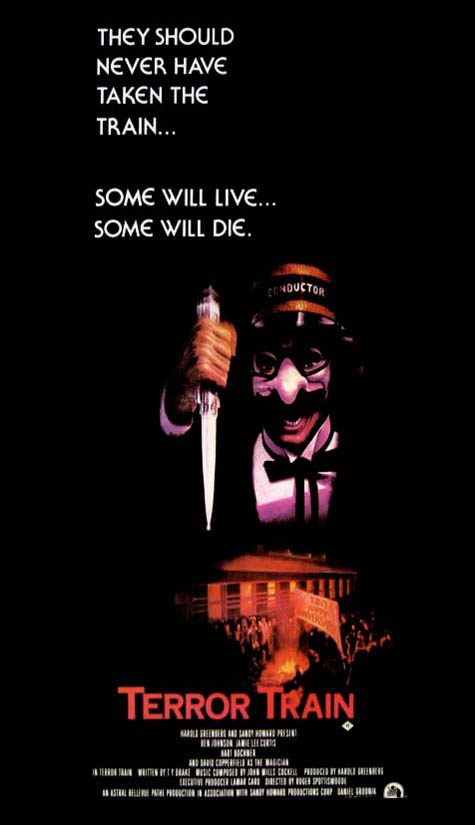 [Image: Photo by ohhector, available through a Creative Commons license].
[Image: Photo by ohhector, available through a Creative Commons license].On the one hand, Rotella suggests a fascinating way to explore the spatial role of the European train station in 20th century political thrillers.
Citing the novels of Eric Ambler, Graham Greene, and John Buchan, and referencing early Alfred Hitchcock films, Rotella demonstrates how it might be possible to foreground certain architectural forms – the train shed, or, perhaps, the multistory car park, the highway flyover, or the maximum security prison – in the process of writing cultural histories.
A short history of novels partially set inside planetariums. A spatial history of films set in shopping malls... with an introduction by Zach Snyder.
In this case, of course, it'd be a political microhistory of the European train station – and someone could very easily get a PhD out of such a scenario: The Train Shed as Depicted in Film, Games, and Literature: An Architecture of Encounter.
But the second point of interest here for me is more political. And that's the fact that, for something published in the United States – and in Los Angeles, no less, kingdom of the private automobile – the article exhibits a depressingly obvious distrust in the municipal spaces of public transport.
In other words, the article goes on to describe the European train station – and train travel more generally – as a threatening bastion of non-white otherness that has infiltrated the modern city. Moroccans, after all, live near certain train stations... and Muslims sometimes ride those very trains...
"Moreover," Rotella points out, "train stations tend to be in working-class immigrant areas where desperadoes find shelter, weapons, false documents and other tools of the trade. The Gare du Midi, on the southern edge of downtown Brussels, is a good example. A few Spanish and Italian shops remain from previous migrations, but the personality of the neighborhood today is Moroccan and Turkish."
Indeed, Rotella further suggests, that otherwise unthreatening train station near you might even serve as spatial host to a "leftist-Islamic militant alliance" – never mind the fact that Islamic terror is almost universally committed against traditional leftist political goals (whether this refers to freedom of speech and the separation of church and state or to gay rights and female suffrage).
But Al-Qaeda, in this way of interpreting European train infrastructure, is something like the passenger from hell – Islamic militarism is Europe's Kenny Hampson, one might say, running amok aboard the Terror Train, exploding bombs on high-speed routes and "slaughtering" innocent bystanders.
 [Image: The horror! It's Terror Train. In the future they might even serve couscous].
[Image: The horror! It's Terror Train. In the future they might even serve couscous]."Trains, stations and the gritty neighborhoods that surround them are often the backdrop to danger," Rotella warns. Specifically, "trains and their stations have played a key role in modern-day plotting and attacks by Islamic terrorists."
Of course, Mike Davis's recent history of car bombs might offer a slightly different take on the relative dangers of various transport infrastructures – but I digress.
This would never happen in the United States, the subtext of Rotella's argument seems to suggest, and it never will... provided we never build more public train stations.
In this context, President Barack Hussein Obama's tentative interest in funding an American high-speed train network takes on rather spectacular political implications – at least as long as one lives in fear of a "leftist-Islamic militant alliance" being forged amongst the screaming wheels of modern railroad yards.
Osama bin Laden is alive and well... and securing more funding for Amtrak.
One man, we actually read – a man accustomed to train travel and with a penchant for political violence – "drank tea and ate couscous while allegedly hatching multimillion-dollar holdups, arms deals, money-laundering schemes and terrorist plots." He ate couscous "in the kebab joints" near Belgium's Gare du Midi, and he daydreamed scenes of near-supernatural violence.
He would arrive upon the world stage, enshrouded in robes of blood.
In any case, I don't mean to sound over-eager to ridicule this story; after all, train stations are heavily populated sites of public gathering, and thus very effective targets for terrorist plots. But does this also make them terrorist breeding grounds?
Can train stations really represent both the secular invasiveness of big-government bureaucracy and violently independent religious conservativism?
Rotella's implication here – that all train stations are somehow, in and of themselves, infrastructural acts of invitation to a vampiric immigrant presence that secretly hopes to inflict evil, thus equating train travel with international Islamic terrorism – seems very obviously motivated by ideology, not intellectual clarity or rational analysis.
Which is too bad, because a cultural history of the train station – as a site for political intrigue and so on – actually sounds incredibly interesting to me. At the very least, one could start a Wikipedia page for "political plots hatched in train stations," or "murders committed in parking garages," or "bombed shopping malls" – focusing on the infrastructural spaces within which certain major types of crime have been planned or committed.
Even more specifically, is there a spatial taxonomy for spy stories – and what types of structures seem repeatedly to appear?
Alas, Rotella's article seems too besotted with AAA to view train travel as anything but a threat to national security.
No comments:
Post a Comment